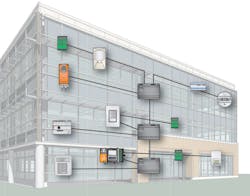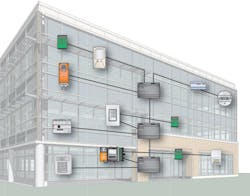Installing Local Area Network and Building Automation Systems
Do you need special knowledge, skills, or abilities to install a building automation system (BAS)? First, let’s define what a BAS is. A BAS takes normal building components and sensors, (i.e., dimming ballasts, thermostats, and card readers) and connects them to a form of intelligence (typically a microprocessor) for a more efficient means of operation. The intelligence provided by smart devices, commonly called controllers, needs some level of programming, but this work is performed by a small number of electrical workers.
Devices and their sensors may be connected to each other or their associated controller through shielded or unshielded twisted-pair cables, the power line connected to the device, a fiber-optic link, or by using wireless (RF) links. All of these are a medium for the controller and the devices to communicate. Defined as two-way communications, there’s an agreed-upon communications language between the devices (commonly called a protocol). From a pure installation of electrical equipment standpoint, there’s nothing unique about the connection of BAS components compared to another piece of electrical equipment.
Some devices use a proprietary protocol while others use open protocols, which are typically interoperable. Interoperability means different network devices from different manufacturers communicate and interact with each other using a common protocol. Does the method of communication matter to the installer of the equipment? Maybe not directly, but if an installer has a working understating of local area networks (LANs), they will be better prepared since the rules of installing LANs apply to BASs.
The LAN of a building plays host to more and more BASs these days. A LAN is a data communications infrastructure within a limited geographical area, like a building. Most LANs are based on the Ethernet family of standards (IEEE 802.3xx). The standard defines the physical layer of the LAN and the device’s media access control when connected. The Internet Protocol (IP) allows the LAN-connected device to talk to other devices across network boundaries. To add reliability and accuracy to IP
communications, the Transmission Control Protocol (TCP) is used, known as the TCP/IP suite of protocols.
To summarize, the physical installation of BAS components doesn’t require any specific knowledge, skills, and abilities. But the added knowledge of LAN equipment and systems ensures all of the mediums used to carry the communication will be installed in a manner that will aid the easy transfer of information.
Coleman is a director of telecommunications curriculum development and training, and Riesberg is director of curriculum development for the NJATC. They can be reached at [email protected] and [email protected].

